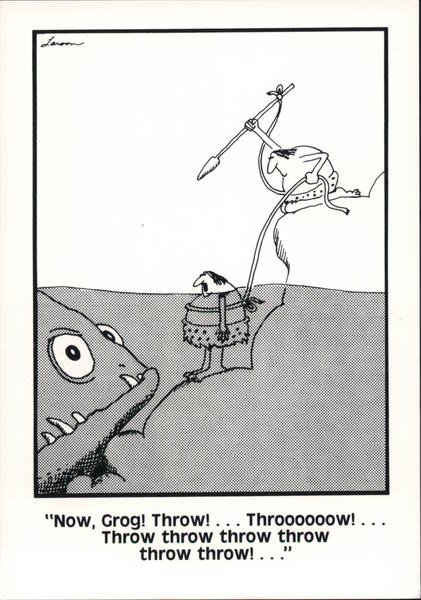Not to mention his bait.

The first person to try this must have been particularly fearless, or particularly hungry. Alternatively, they started with something smaller than a mammoth, and worked their way up.
Why didn’t they domesticate the mammoths instead of hunting them to extinction, if they actually did, which I doubt.
The mega fauna of the Interglacial periods were all killed off at the same time by some natural catastrophe..............
Or he was the victim of the proverbial "I triple dog dare you".
Olé!
Hold my beer and watch this...
5.56mm
Not to mention his bait.

“The fact that the point tends to detach when used on a pike may also explain why Clovis points are often discovered inside mammoth skeletons that show no sign of having been butchered by humans. According to the researchers, some animals may have survived these attacks, yet would have been left with a blade lodged in their body for the rest of their lives.”
Yup.
But the second person planted a row or two of pikes and and stampeded a herd towards them...
Not according to a hunter and widlife biologist I know (Dr. Charles Kay) with long experience in Africa with aboriginal guides familiar with elephant hunting. He describes an aboriginal proboscidean hunting process in his book, Wilderness and Political Ecology, pp246-7. First, mammoths would be naive about newly arriving people; they would not be recognized by mammoths as a threat. Gut stick the beast with a short spear. Use dogs to distract its reaction. Then follow it for about three days until it dies of peritonitis.
See above.
There is hungry and then there is lets go “kill a mammoth with sharp sticks hungry”.
My bet is they used atlatls.
Ping
Like at the 4:23 mark in this scene from Braveheart? https://www.youtube.com/watch?v=oXz612JAx4Y
This is somewhat off topic, but I recently saw a demonstration of a staff-sling (a weapon that was believed to be prominent in the ancient Near East at one time. The operator of it could hurl surprisingly heavy stones out to distances just shy of longbow range...and do it consistently. The only downside is that it required noticeably more room to operate than a bow. Another potential drawback was that it delivered concussive force instead of piercing-type damage. Still, I was amazed at the dents that it put in sheet-metal plates at distances of around 80 yards. Getting hit with one of those stones in a relatively unarmored spot would definitely ruin your day.
I have read that it was easier to kill the young instead of the adults. Same for wolves and other predators today.
Well, maybe they didn’t just stand there holding the pike waiting for a charge. They could have pre-planted the pikes in a certain location, and then just led the animals into a trap.
Obviously that’s easier in a hilly area with box canyons and such, but early humans also built man-made structures called “kites” that may have served a similar purpose for hunting.